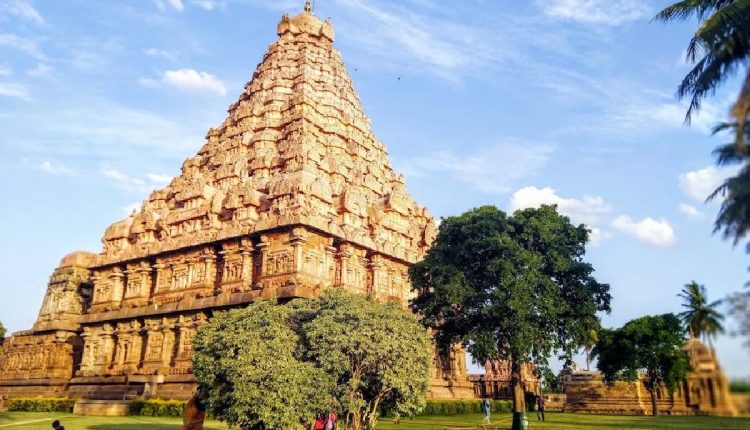In the heart of Tamil Nadu, hidden away from the bustling tourist trails, stands a majestic yet often-overlooked marvel — the Gangaikonda Cholapuram Temple. Built over 1,000 years ago by the legendary Chola emperor Rajaraja Chola I’s son, Rajendra Chola I, this temple is a symbol of imperial grandeur, divine devotion, and timeless artistry.
While the Brihadeeswarar Temple in Thanjavur is celebrated worldwide, Gangaikonda Cholapuram — its spiritual and architectural successor — remains one of India’s best-kept heritage secrets. But those who walk through its hallowed corridors understand: this temple is not just built of stone, but of glory, ambition, and spiritual fire.
The Legacy of a Victor King
The name “Gangaikonda Cholapuram” means “The city of the Chola who brought the Ganges.” It was built by Rajendra Chola I after his victorious expedition to the northern regions of India, where he brought back the sacred Ganges water in a golden pot. As a result, he established a new capital and constructed this grand temple to honour Lord Shiva, his family deity.
This temple was envisioned not just as a religious monument, but as the heart of a new imperial city, radiating the Chola dynasty’s unmatched power, wealth, and devotion.
A Masterpiece in Stone
At first glance, the Gangaikonda Cholapuram Temple may remind visitors of the Thanjavur Big Temple — and rightly so. It was designed to mirror and surpass it. Though slightly shorter, its vimana (temple tower) rises in a more elegant, curved structure, giving it a softer and more graceful silhouette.
Key architectural highlights:
-
Towering Vimana: Standing around 180 feet, it features intricate carvings of deities, dancers, and mythical beasts.
-
Massive Shiva Lingam: One of the largest Shiva Lingams in South India resides in the sanctum, exuding deep spiritual energy.
-
Sculptural Brilliance: The temple walls are adorned with delicate stone sculptures, showcasing scenes from Hindu mythology and the Chola military conquests.
-
Lion-Well (Simha-Kinaru): An artistic water well guarded by a lion sculpture—an example of blending utility with symbolism.
Spiritual Significance
Dedicated to Lord Shiva, worshipped here as Gangaikonda Choleswarar, the temple continues to be a place of daily worship. Despite centuries of weathering and political change, the spiritual atmosphere remains intact. Devotees visit to offer prayers, seek blessings for strength, and bask in the quiet, meditative ambience the temple offers.
The presence of Ganga (the holy river) in the temple’s mythology makes it spiritually significant — a rare South Indian temple linked so directly with northern sacred traditions.
A Forgotten Capital, A Silent Witness
What sets Gangaikonda Cholapuram apart is that it was not just a temple — it was once the imperial capital of the Chola dynasty. However, over time, the city fell into decline due to shifting political power and invasions. Today, little remains of the grand capital city except the temple — standing tall as a proud sentinel of history.
This adds a quiet mystique to the site: as you walk through its spacious courtyards, it’s as though you’re listening to the echoes of a vanished civilization.
Visiting Gangaikonda Cholapuram
-
Location: Ariyalur District, Tamil Nadu (around 70 km from Thanjavur, 35 km from Kumbakonam)
-
Timings: 6:00 AM to 12:00 PM and 4:00 PM to 8:00 PM
-
Entry Fee: Free
-
Best Time to Visit: November to February (cooler months and better light for photography)
-
Photography Tip: Visit during the golden hours (early morning or late evening) for breathtaking shots of the temple glowing in sunlight.
UNESCO Recognition
In 2004, Gangaikonda Cholapuram Temple was inscribed as part of the “Great Living Chola Temples” UNESCO World Heritage Site, along with the temples at Thanjavur and Darasuram. This recognition highlights the temple’s outstanding universal value — not just for India, but for all of humanity.
Why You Shouldn’t Miss It
-
It is one of the finest examples of imperial temple architecture in India.
-
Offers a less-crowded, peaceful spiritual experience compared to more commercial temples.
-
A must-visit for history buffs, architecture lovers, and cultural explorers.
-
It bridges the cultural divide between northern and southern India through its sacred Ganga connection.


Comments are closed.